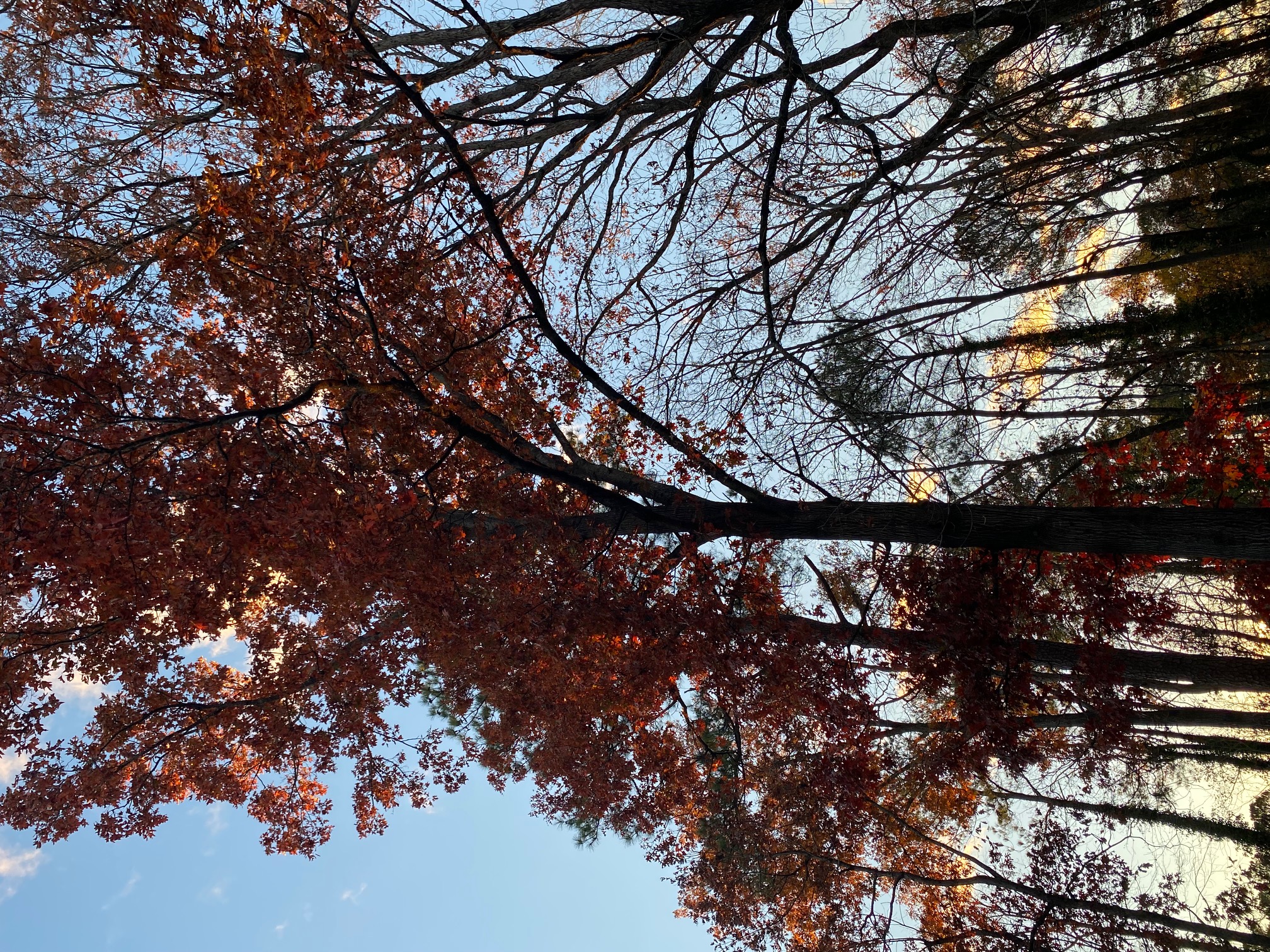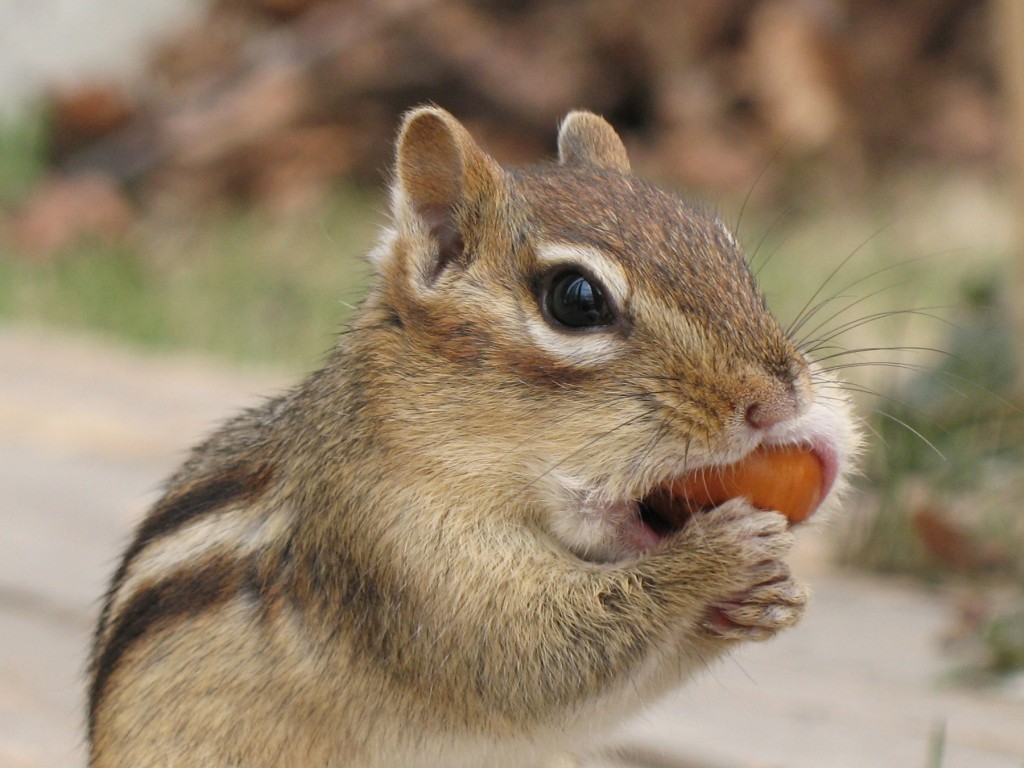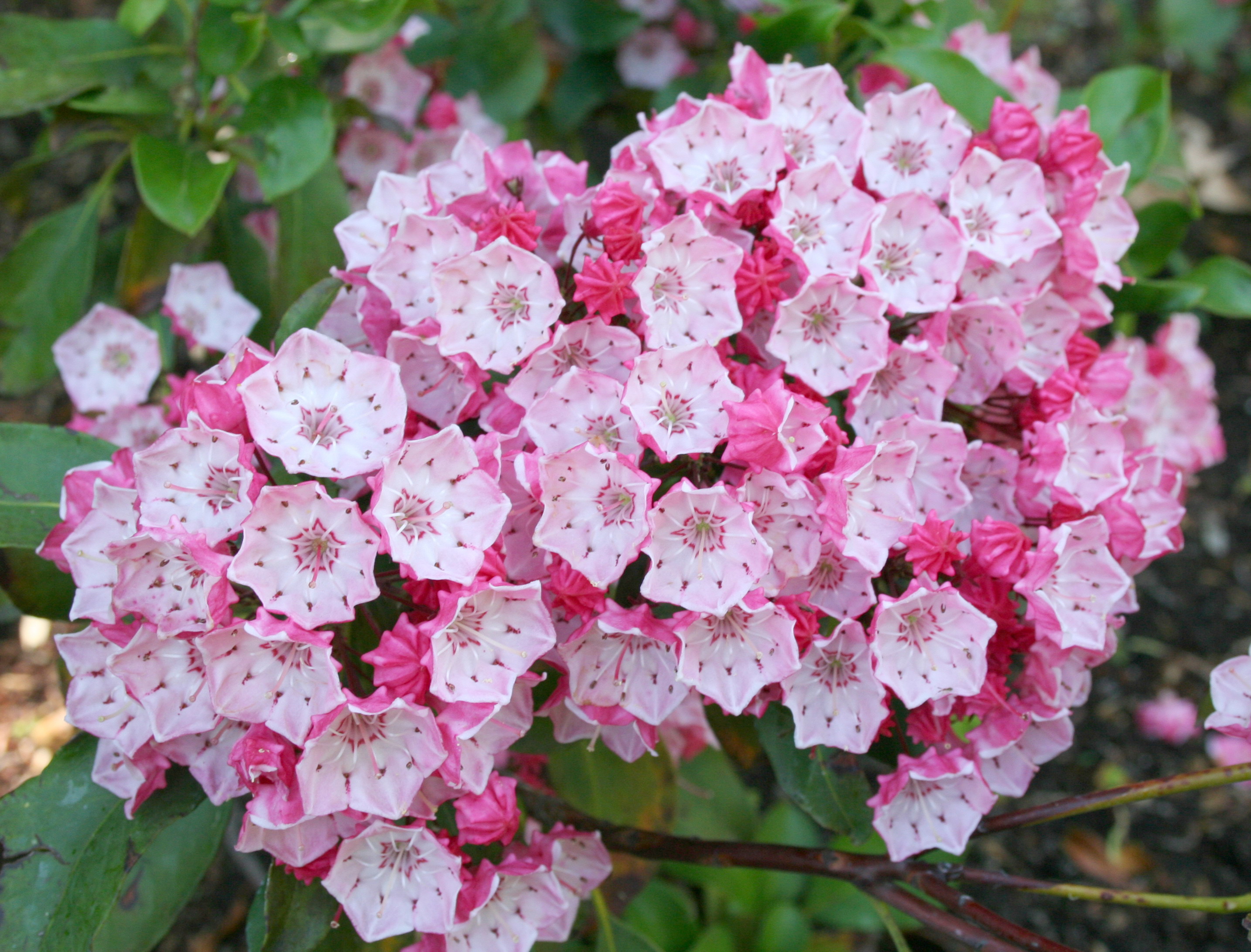|
Oak–hickory Forest
Oak–hickory forest is a type of North American forest ecosystem, and an ecoregion of the Temperate broadleaf and mixed forests Biome. Geography It has a range extending from Rhode Island and southern New York, west to Iowa, and south to Northern Georgia. Smaller, isolated oak–hickory communities can also be found as far west as North Dakota, south in Florida and in northeast Texas, and north to southern Maine and Ontario. They can also be found in Pennsylvania west to Illinois. Dominated by nut-bearing oak and hickory species of trees, the oak–hickory forest has the largest range of any deciduous forest ecosystem in eastern and central North America. Natural history The current oak–hickory forest includes the former range of the oak–chestnut forest region, which encompassed the northeast portion of the current oak–hickory range. When the American chestnut population succumbed to invasive fungal blight in the early 20th century, those forests shifted to an oak and hicko ... [...More Info...] [...Related Items...] OR: [Wikipedia] [Google] [Baidu] |
North America
North America is a continent in the Northern Hemisphere and almost entirely within the Western Hemisphere. It is bordered to the north by the Arctic Ocean, to the east by the Atlantic Ocean, to the southeast by South America and the Caribbean Sea, and to the west and south by the Pacific Ocean. Because it is on the North American Plate, North American Tectonic Plate, Greenland is included as a part of North America geographically. North America covers an area of about , about 16.5% of Earth's land area and about 4.8% of its total surface. North America is the third-largest continent by area, following Asia and Africa, and the list of continents and continental subregions by population, fourth by population after Asia, Africa, and Europe. In 2013, its population was estimated at nearly 579 million people in List of sovereign states and dependent territories in North America, 23 independent states, or about 7.5% of the world's population. In Americas (terminology)#Human ge ... [...More Info...] [...Related Items...] OR: [Wikipedia] [Google] [Baidu] |
Scarlet Oak
''Quercus coccinea'', the scarlet oak, is a deciduous tree in the red oak section ''Lobatae'' of the genus ''Quercus'', in the family Fagaceae. It is primarily distributed in the central and eastern United States. It occurs on dry, sandy, usually acidic soil. It is often an important canopy species in oak–heath forests. The scarlet oak is the official tree of Washington, D.C. Description ''Quercus coccinea'' is a medium to large deciduous tree growing to around with an open, rounded crown; the maximum height is approximately . The trunk diameter at breast height is typically It is a medium-size tree that grows fast and matures relatively early. It sets a deep growing taproot. The leaves are glossy green, long and broad, with seven lobes, and deep sinuses between the lobes. Each lobe has 3–7 bristle-tipped teeth. The leaf is hairless (unlike the related pin oak (''Q. palustris''), with tufts of pale orange-brown down where the lobe veins join the central vein). The ... [...More Info...] [...Related Items...] OR: [Wikipedia] [Google] [Baidu] |
Chipmunk
Chipmunks are small, striped rodents of the family Sciuridae. Chipmunks are found in North America, with the exception of the Siberian chipmunk which is found primarily in Asia. Taxonomy and systematics Chipmunks may be classified either as a single genus, ''Tamias'', or as three genera: ''Tamias'', of which the eastern chipmunk (''T. striatus'') is the only living member; ''Eutamias'', of which the Siberian chipmunk (''E. sibiricus'') is the only living member; and '' Neotamias'', which includes the 23 remaining, mostly western North American, species. These classifications were treated as subgenera due to the chipmunks' morphological similarities. As a result, most taxonomies over the twentieth century have placed the chipmunks into a single genus. However, studies of mitochondrial DNA show that the divergence between each of the three chipmunk groups is comparable to the genetic differences between '' Marmota'' and '' Spermophilus'', so the three genera classifications ha ... [...More Info...] [...Related Items...] OR: [Wikipedia] [Google] [Baidu] |
Flying Squirrel
Flying squirrels (scientifically known as Pteromyini or Petauristini) are a tribe of 50 species of squirrels in the family Sciuridae. Despite their name, they are not in fact capable of full flight in the same way as birds or bats, but they are able to glide from one tree to another with the aid of a patagium, a furred parachute-like skin membrane that stretches from wrist to ankle. Their long tails also provide stability as they glide. Anatomically they are very similar to other squirrels with a number of adaptations to suit their lifestyle; their limb bones are longer and their hand bones, foot bones, and distal vertebrae are shorter. Flying squirrels are able to steer and exert control over their glide path with their limbs and tail. Molecular studies have shown that flying squirrels are monophyletic and originated some 18–20 million years ago. The genus Paracitellus is the earliest lineage to the flying squirrel dating back to the late Oligocene era. Most are nocturnal ... [...More Info...] [...Related Items...] OR: [Wikipedia] [Google] [Baidu] |
Eastern Gray Squirrel
The eastern gray squirrel (''Sciurus carolinensis''), also known, particularly outside of North America, as simply the grey squirrel, is a tree squirrel in the genus ''Sciurus''. It is native to eastern North America, where it is the most prodigious and ecologically essential natural forest regenerator. Widely introduced to certain places around the world, the eastern gray squirrel in Europe, in particular, is regarded as an invasive species. In Europe, ''Sciurus carolinensis'' is included since 2016 in the list of Invasive Alien Species of Union concern (the Union list). This implies that this species cannot be imported, bred, transported, commercialized, or intentionally released into the environment in the whole of the European Union. Distribution ''Sciurus carolinensis'' is native to the eastern and midwestern United States, and to the southerly portions of the central provinces of Canada. The native range of the eastern gray squirrel overlaps with that of the fox squir ... [...More Info...] [...Related Items...] OR: [Wikipedia] [Google] [Baidu] |
Michigan Technological University
Michigan Technological University (Michigan Tech, MTU, or simply Tech) is a public research university in Houghton, Michigan, United States, founded in 1885 as the Michigan Mining School, the first post-secondary institution in the Upper Peninsula of Michigan. Michigan Tech is classified among "R2: Doctoral Universities – High research activity". There are 12 research areas including Space Sciences, Electronics, Ecosystems, Energy, Health, Ocean Sciences, and Robotics. There are 18 research centers on and off campus including the Michigan Tech Research Institute. The university is governed by an eight-member board of trustees whose members are appointed by the governor of Michigan and confirmed by the Michigan Senate. The university comprises five colleges and schools: the College of Engineering, the College of Computing, the College of Sciences and Arts, the College of Business, and the College of Forest Resources and Environmental Science. They offer more than 140 degre ... [...More Info...] [...Related Items...] OR: [Wikipedia] [Google] [Baidu] |
Crataegus
''Crataegus'' (), commonly called hawthorn, quickthorn, thornapple, Voss, E. G. 1985. ''Michigan Flora: A guide to the identification and occurrence of the native and naturalized seed-plants of the state. Part II: Dicots (Saururaceae–Cornaceae)''. Cranbrook Institute of Science and University of Michigan Herbarium, Ann Arbor, Michigan. May-tree,Graves, Robert. ''The White Goddess: A Historical Grammar of Poetic Myth'', 1948, amended and enlarged 1966, New York: Farrar, Straus and Giroux. whitethorn, Mayflower, or hawberry, is a genus of several hundred species of shrubs and trees in the family Rosaceae, native to temperate regions of the Northern Hemisphere in Europe, Asia, North Africa, and North America. The name "hawthorn" was originally applied to the species native to northern Europe, especially the common hawthorn ''C. monogyna'', and the unmodified name is often so used in Britain and Ireland. The name is now also applied to the entire genus and to the related Asia ... [...More Info...] [...Related Items...] OR: [Wikipedia] [Google] [Baidu] |
Kalmia Latifolia
''Kalmia latifolia'', the mountain laurel, calico-bush, or spoonwood, is a species of flowering plant in the heath family Ericaceae, that is native to the eastern United States. Its range stretches from southern Maine south to northern Florida, and west to Indiana and Louisiana. Mountain laurel is the state flower of Connecticut and Pennsylvania. It is the namesake of Laurel County in Kentucky, the city of Laurel, Mississippi, and the Laurel Highlands in southwestern Pennsylvania. Growth ''Kalmia latifolia'' is an evergreen shrub growing tall. The leaves are 3–12 cm long and 1–4 cm wide. The flowers are hexagonal, sometimes appearing to be pentagonal, ranging from light pink to white, and occur in clusters. There are several named cultivars that have darker shades of pink, red and maroon. It blooms in May and June. All parts of the plant are poisonous. The roots are fibrous and matted. The plant is naturally found on rocky slopes and mountainous forest areas. ... [...More Info...] [...Related Items...] OR: [Wikipedia] [Google] [Baidu] |
Blueberry
Blueberries are a widely distributed and widespread group of perennial flowering plants with blue or purple berries. They are classified in the section ''Cyanococcus'' within the genus '' Vaccinium''. ''Vaccinium'' also includes cranberries, bilberries, huckleberries and Madeira blueberries. Commercial blueberries—both wild (lowbush) and cultivated (highbush)—are all native to North America. The highbush varieties were introduced into Europe during the 1930s. Blueberries are usually prostrate shrubs that can vary in size from to in height. In commercial production of blueberries, the species with small, pea-size berries growing on low-level bushes are known as "lowbush blueberries" (synonymous with "wild"), while the species with larger berries growing on taller, cultivated bushes are known as "highbush blueberries". Canada is the leading producer of lowbush blueberries, while the United States produces some 40% of the world supply of highbush blueberries. Origin an ... [...More Info...] [...Related Items...] OR: [Wikipedia] [Google] [Baidu] |
Cornus Florida
''Cornus florida'', the flowering dogwood, is a species of flowering tree in the family Cornaceae native to eastern North America and northern Mexico. An endemic population once spanned from southernmost coastal Maine south to northern Florida and west to the Mississippi River. The tree is commonly planted as an ornamental in residential and public areas because of its showy bracts and interesting bark structure. Classification The flowering dogwood is usually included in the dogwood genus ''Cornus'' as ''Cornus florida'' L., although it is sometimes treated in a separate genus as ''Benthamidia florida'' (L.) Spach. Less common names for ''C. florida'' include American dogwood, Florida dogwood, Indian arrowwood, Cornelian tree, white cornel, white dogwood, false box, and false boxwood. Two subspecies are generally recognized: Description Flowering dogwood is a small deciduous tree growing to high, often wider than it is tall when mature, with a trunk diameter of up to . ... [...More Info...] [...Related Items...] OR: [Wikipedia] [Google] [Baidu] |
Carya Ovata
''Carya ovata'', the shagbark hickory, is a common hickory in the Eastern United States and southeast Canada. It is a large, deciduous tree, growing well over tall, and can live more than 350 years. The tallest measured shagbark, located in Savage Gulf, Tennessee, is over tall . Mature shagbarks are easy to recognize because, as their name implies, they have shaggy bark. This characteristic is, however, only found on mature trees; young specimens have smooth bark. The shagbark hickory's nut is edible and has a very sweet taste. The leaves are long, pinnate, with five (rarely three or seven) leaflets, the terminal three leaflets much larger than the basal pair. The shagbark hickory is monoecious. Staminate flowers are borne on long-stalked catkins at the tip of old wood or in the axils of the previous season's leaves. Pistillate flowers occur in short terminal spikes. The fruit is a drupe long, an edible nut with a hard, bony shell, contained in a thick, green four-section ... [...More Info...] [...Related Items...] OR: [Wikipedia] [Google] [Baidu] |
Carya Cordiformis
''Carya cordiformis'', the bitternut hickory, also called bitternut or swamp hickory, is a large pecan hickory with commercial stands located mostly north of the other pecan hickories. Bitternut hickory is cut and sold in mixture with the true hickories. It is the shortest-lived of the hickories, living to about 200 years. Description It is a large deciduous tree, growing up to tall (exceptionally to ), with a trunk up to diameter. The leaves are long, pinnate, with 7–11 leaflets, each leaflet lanceolate, long, with the apical leaflets the largest but only slightly so. The flowers are small wind-pollinated catkins, produced in spring. The fruit is a very bitter nut, long with a green four-valved cover which splits off at maturity in the fall, and a hard, bony shell. Another identifying characteristic is its bright sulfur-yellow winter bud. It is closely related to the pecan, sharing similar leaf shape and being classified in the same section of the genus ''Carya'' s ... [...More Info...] [...Related Items...] OR: [Wikipedia] [Google] [Baidu] |
.jpg)








.jpg)

